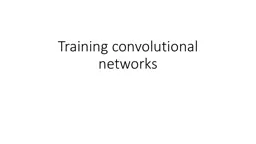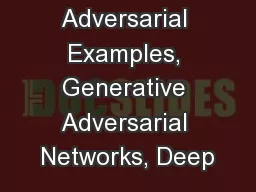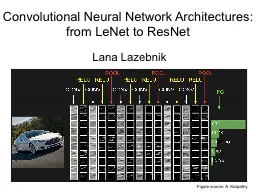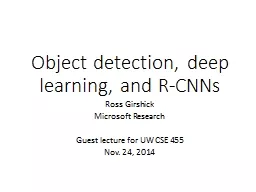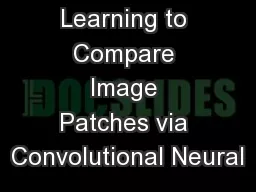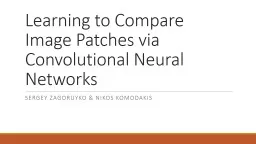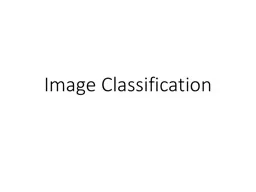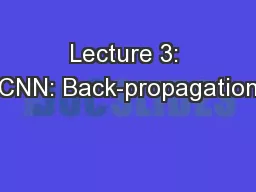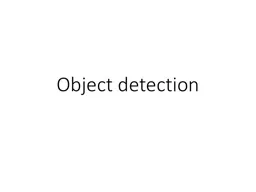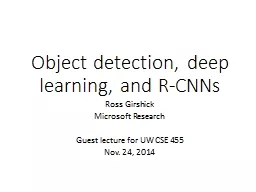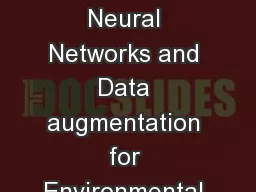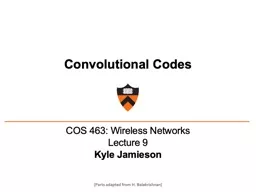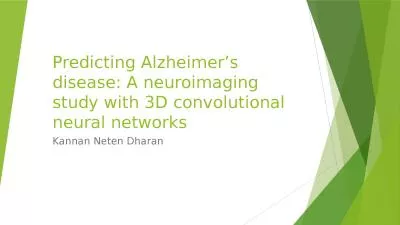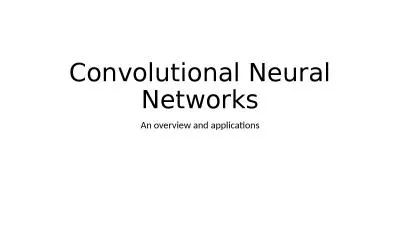PPT-Training convolutional networks
Author : liane-varnes | Published Date : 2018-03-12
Last time Linear classifiers on pixels bad need nonlinear classifiers Multilayer perceptrons overparametrized Reduce parameters by local connections and shift
Presentation Embed Code
Download Presentation
Download Presentation The PPT/PDF document "Training convolutional networks" is the property of its rightful owner. Permission is granted to download and print the materials on this website for personal, non-commercial use only, and to display it on your personal computer provided you do not modify the materials and that you retain all copyright notices contained in the materials. By downloading content from our website, you accept the terms of this agreement.
Training convolutional networks: Transcript
Download Rules Of Document
"Training convolutional networks"The content belongs to its owner. You may download and print it for personal use, without modification, and keep all copyright notices. By downloading, you agree to these terms.
Related Documents

